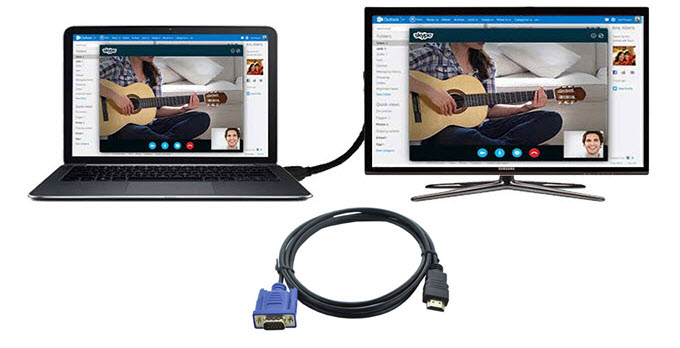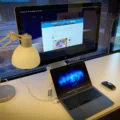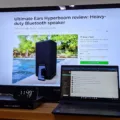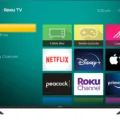Resolution is an essential aspect of any video display, be it on a computer or a TV. It refers to the number of pixels that make up an image, and the higher the resolution, the clearer and sharper the image appears. However, sometimes the resolution on a computer can be different from that of a TV, which can lead to blurry or distorted images. In this article, we will discuss how to fix the resolution on a computer to TV HDMI.
The first step in fixing the resolution is to go to the settings menu on the device. On a computer, this can be accessed by right-clicking on the desktop and selecting display settings. On a TV, it can usually be accessed through the settings menu. Look for options for display and select the resolution setting.
Once in the resolution settings, select the appropriate resolution for your TV. This will usually be either HD 720p, HD 1080i, or HD 1080p. Make sure to click on the apply button to save the changes.
Another way to fix the resolution is to change the aspect settings to fit your TV. This can be done by pressing the menu button on the remote control, highlighting settings, selecting television, and choosing the TV resolution option. From there, you can select the appropriate resolution for your TV and click on the OK button.
If your TV and computer screen resolutions are the same, then you can leave them as they are. However, if they are different, you may need to adjust the scaling and layout settings. This can be done by going back to the display settings on the computer, clicking on the scale and layout section, and selecting a layout that works best for your TV.
Fixing the resolution on a computer to TV HDMI is an important step in ensuring that you get the best possible picture quality. By following the steps outlined in this article, you can adjust your resolution to fit your TV and enjoy your favorite movies and TV shows without any distortion or blurriness.

Adjusting the Resolution on an HDMI TV
To fix the resolution on your HDMI TV, you need to access the settings menu on your device. Here are the steps:
1. Turn on your TV and the device that you want to connect to the TV via HDMI.
2. Use the remote control to navigate to the settings menu on your device.
3. Look for the display settings option in the settings menu.
4. Once you’ve found the display settings option, select it to access the display settings.
5. Look for the resolution option in the display settings.
6. Select the resolution that you want to use for your TV.
7. If the resolution that you want to use is not available, you may need to adjust the settings on your device to enable that resolution.
8. Once you’ve selected the resolution, save the settings and exit the settings menu.
9. Your TV should now display the resolution that you selected.
If you’re still having problems with the resolution on your HDMI TV, you may need to consult the user manual for your device or contact the manufacturer for assistance.
Changing the Resolution on an HDMI Connection from a Laptop to a TV
To change the resolution on HDMI from laptop to TV, you can follow the steps below:
1. Click on the Start button icon located in the bottom left corner of your screen.
2. From the Start menu, click on the Control Panel option.
3. In the Control Panel window, locate and click on the option labeled Appearance and Personalization.
4. Under the Appearance and Personalization section, click on the Adjust Screen Resolution option.
5. A new window will appear where you can see the current screen resolution settings for your laptop and TV.
6. Select the TV screen from the drop-down menu labeled “Display” located at the top of the window.
7. Under the “Display” drop-down menu, you will see a list of available resolutions for your TV. Select the resolution that you want to apply by clicking on it.
8. Click on the Apply button to save the new resolution settings.
9. Once you have applied the new resolution settings, click on the OK button to exit the window.
By following these steps, you should be able to change the resolution on HDMI from laptop to TV successfully.
Adjusting the Resolution to Fit on a TV
To adjust the resolution on your TV, you will need to access the settings menu on your remote control. Once you have done this, select the “Television” option and then choose “TV resolution”. From there, you can use the arrow buttons to select the appropriate resolution for your TV. Your options will typically include HD 720p, HD 1080i, and HD 1080p. It is important to choose the correct resolution to ensure that the picture quality is optimal and that the image fits properly on your TV screen. By following these simple steps, you can adjust the resolution on your TV and enjoy your favorite programs with the best possible picture quality.
Adjusting Screen Size with HDMI
To adjust your screen size with HDMI, you can follow these steps:
1. Right-click on your Desktop and select Display Settings.
2. Make sure you have selected the proper resolution for your TV and Laptop screen. If they are the same, leave it as it is.
3. Click on the Scale and Layout section.
4. Change the layout from 100% to 200% or whatever is available to adjust the screen size.
5. You can also use the slider under the option “Change the size of text, apps, and other items” to adjust the screen size according to your preference.
Additionally, some TVs have their own settings to adjust the screen size. You can refer to the TV manual or check the TV settings to adjust the screen size accordingly.
Conclusion
Resolution is a critical aspect of any display device, whether it is a computer monitor or a TV screen. It determines the clarity and sharpness of the images and text displayed on the screen. To optimize the viewing experience, it is important to select the appropriate resolution based on the size and capabilities of the device. By adjusting the resolution settings, users can achieve the best possible visual quality and avoid issues like distorted images or text. With the right resolution settings, users can enjoy a crisp and clear display that enhances their viewing experience.








